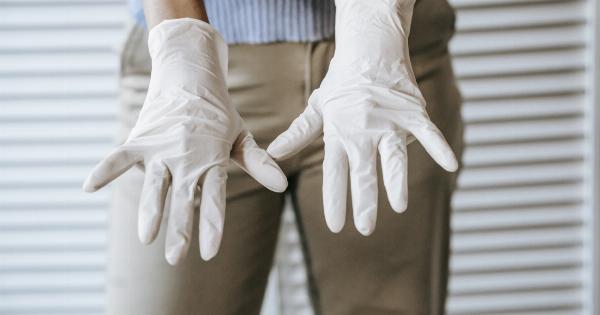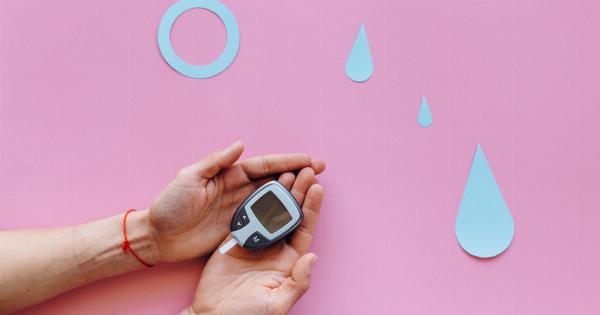Depression, a complex and debilitating mental health disorder, has long been studied by scientists and researchers to better understand its causes, symptoms, and treatments.
While depression affects millions of individuals worldwide, it has become increasingly evident that this disorder does not have a one-size-fits-all expression. Recent studies have shed light on how depression can manifest in different forms, helping experts tailor treatment plans and support for those struggling with the condition.
The Varying Faces of Depression
Traditionally, depression has been categorized into major depressive disorder (MDD), dysthymia, and bipolar disorder. However, emerging research has revealed that there are numerous ways in which depression can present itself.
Some of the different forms of depression include:.
1. Seasonal Affective Disorder (SAD)
SAD is a subtype of depression that typically occurs in conjunction with the changing seasons, often in the fall or winter months when there is less sunlight.
Symptoms of SAD may include persistent sadness, low energy levels, difficulty concentrating, and social withdrawal. This form of depression is thought to be related to changes in daylight duration and the body’s circadian rhythm.
2. Postpartum Depression
Postpartum depression is a specific type of depression that affects new mothers after giving birth.
Hormonal fluctuations, sleep deprivation, and the challenges of adjusting to motherhood can contribute to feelings of sadness, irritability, and an overall loss of interest in daily activities. Prompt diagnosis and treatment are crucial to support maternal mental health and overall well-being.
3. Psychotic Depression
Psychotic depression is a severe subtype of depression that is accompanied by psychotic features, such as hallucinations or delusions. Individuals with psychotic depression may experience depressive symptoms along with distorted perceptions of reality.
This form of depression generally requires intensive treatment, including a combination of medication and therapy.
4. Atypical Depression
Atypical depression is characterized by a unique set of symptoms that differentiate it from typical depression.
While individuals with atypical depression may still experience sadness and low mood, they are also more likely to exhibit increased appetite, weight gain, excessive sleep, and sensitivity to rejection. This subtype of depression often responds well to certain types of medication.
5. Persistent Depressive Disorder (PDD)
Persistent depressive disorder, also known as dysthymia, is a chronic form of depression that lasts for two or more years. Unlike major depressive disorder, the symptoms of PDD are less severe but are persistent and long-lasting.
Individuals with PDD may experience a constant low mood, feelings of hopelessness, low self-esteem, and a lack of interest in previously pleasurable activities.
6. Bipolar Depression
Bipolar depression, also referred to as manic depression, is characterized by cycles of extreme highs (mania or hypomania) and extreme lows (depression).
During depressive episodes, individuals with bipolar disorder experience the symptoms commonly associated with depression. However, distinguishing bipolar depression from unipolar depression is crucial for accurate diagnosis and appropriate treatment.
7. High-Functioning Depression
High-functioning depression is a form of depression where individuals are able to maintain a seemingly high level of productivity and success while grappling with internal struggles.
This type of depression can often be difficult to detect, as individuals may appear fine on the surface, making it challenging for them to seek help and support.
8. Anxiety and Depression
Anxiety and depression often coexist, with one condition exacerbating the other. The symptoms of anxiety, such as excessive worry, restlessness, and irritability, may overlap with those of depression.
This combination of disorders can significantly impact an individual’s well-being and require a comprehensive treatment plan targeting both conditions.
9. Reactive Depression
Reactive depression, also known as situational depression, occurs as a direct response to a stressful or traumatic event. This form of depression is often temporary and may resolve once the individual copes with or adapts to the triggering situation.
However, if left unaddressed, reactive depression can escalate into a more chronic condition.
10. Masked Depression
Masked depression is a term used to describe individuals who present with physical symptoms, such as chronic pain, fatigue, or gastrointestinal issues, rather than displaying the typical psychological symptoms associated with depression.
This form of depression can be particularly challenging to diagnose, as the focus is often on treating the physical complaints rather than addressing the underlying mental health condition.
Unlocking New Treatment Approaches
The recognition and understanding of the diverse expressions of depression have opened up new possibilities for tailored treatment approaches.
While common antidepressant medications can be effective for many forms of depression, certain subtypes may benefit from alternative or adjunct therapies. Psychotherapy, such as cognitive-behavioral therapy (CBT) or interpersonal therapy (IPT), has shown promising results in various manifestations of depression.
Furthermore, as researchers delve deeper into the neurobiological mechanisms underlying different forms of depression, targeted interventions involving neurostimulation techniques are being explored.
Transcranial magnetic stimulation (TMS), electroconvulsive therapy (ECT), and deep brain stimulation (DBS) are emerging as potential treatment options for individuals who have not responded favorably to traditional approaches.
Recognizing the Signs and Seeking Help
It is crucial to recognize that depression can take on various forms and expressions, and it is not a one-size-fits-all disorder.
Understanding the different ways in which depression can present itself can help individuals and their loved ones identify the signs and seek appropriate support and treatment.
If you or someone you know is experiencing persistent feelings of sadness, hopelessness, or loss of interest in activities, it is essential to reach out to a healthcare professional or mental health provider.
Early intervention and proper diagnosis can lead to effective management and improved quality of life for those living with depression.
Remember, seeking help is a sign of strength, and no one should face depression alone.





























